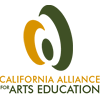Arts Education and Title 1 Funding: What you can do

A primary mission of the California Alliance for Arts Education is to ensure that every student, not just those who are fortunate to live in affluent communities, receives the benefits of arts education as a component of a comprehensive high-quality education. This commitment led to our involvement in Title I funding for public education.
Title I refers to federal funding intended to meet the needs of low-performing children in high-poverty schools by closing the achievement gap between high- and low-performing children, specifically minority and disadvantaged students, and by strengthening accountability to ensure that all students meet challenging standards. Currently California receives $1.6 billion in Title I funds each year. In the Bay Areas five counties there are currently 523 Title I schools, including numerous community schools.
 The prevailing attitude and practice with regard to the use of Title I funds to support arts education strategies has been either that arts education isn't permissible under the guidelines of Title I goals, or that if a school or district intends to invest in arts education strategies, it's best to keep that practice below the radar, to avoid the scrutiny and the possible revocation of funds by state or federal administrators. Despite public statements from Secretary of Education Arne Duncan that Title I funds can be used for arts education strategies, schools have been reluctant to do so and to date there is no public evidence of schools in California using Title I funds in this manner.
The prevailing attitude and practice with regard to the use of Title I funds to support arts education strategies has been either that arts education isn't permissible under the guidelines of Title I goals, or that if a school or district intends to invest in arts education strategies, it's best to keep that practice below the radar, to avoid the scrutiny and the possible revocation of funds by state or federal administrators. Despite public statements from Secretary of Education Arne Duncan that Title I funds can be used for arts education strategies, schools have been reluctant to do so and to date there is no public evidence of schools in California using Title I funds in this manner.
The California Alliance for Arts Education has been working at the local, state and federal levels, to expand the culture of Title I funding so that guidelines for arts education within Title 1 are clear and so that schools may feel empowered to employ these strategies to attain Title I goals, including student achievement in literacy and math, attendance and behavior, teacher effectiveness and parent engagement.
Over the past year, the Alliance committed significant time to map a clear policy pathway in which Title I schools may use federal funds to support arts education strategies to promote student success. This work has taken us from conversations with principals, to meetings with school district personnel, to ongoing conversations with officials at the California Department of Education, and with previous and current director of the Student Achievement and School Accountability at the Department of Education in Washington. Our efforts relied upon the combined impact of advocacy, research, and policy guidance to broaden understanding, build consensus, and bring about change. Those efforts have opened doors that have been previous shut or ignored that may lead to increased access to arts education learning opportunities for Title I students. In recent weeks, the Department of Education released a letter with language, confirming the essential role of arts education and the path we are on. Read the full letter.
The response to our effort has been heartening. At the federal level we have achieved a significant shift in how they recognize arts education strategies to support Title I goals. At the state level we've been invited into a role of partnership, hosting a panel on the subject at the state Title I conference. At the county level we began planning regional workshops in six areas around the state, including San Diego, Los Angeles, Fresno, Alameda, and Sacramento. Ten schools around the state are participating in our first cohort of schools engaged in this practice.
What can parents do next to support arts education?
- Share arts education information such as the policy pathway report and ten important things to know about arts education with your administrators, school board members and community leaders.
- Ask your school board about what type of arts programs are currently being offered at your school. This information will help lay the groundwork for what you can to do next. Use the Insiders Guide to Arts Education Planning for additional guidance.
- Ask your school board whether your school district uses Title 1 money to support arts education. The U.S. Department of Education recently released a letter stating that "Activities that support the arts, in conjunction with other activities, can form an important part of an LEA's Title I program."
- Contact your local PTA Arts Education Chair and discuss ways you can work together to ensure a high-quality education for ALL students that includes the arts.










